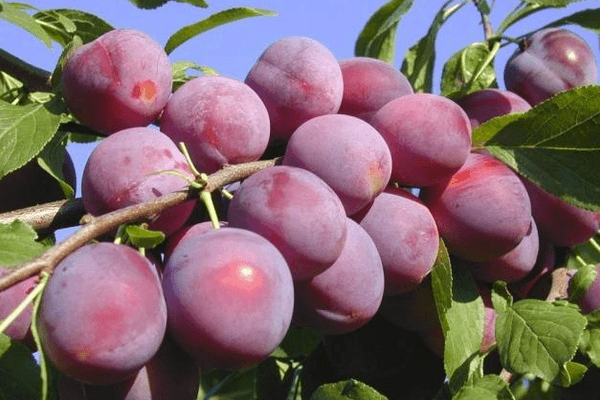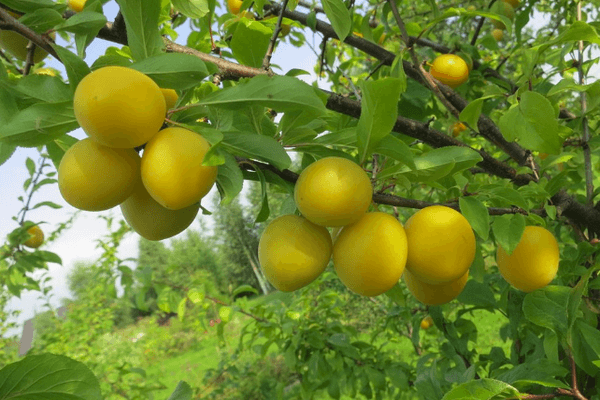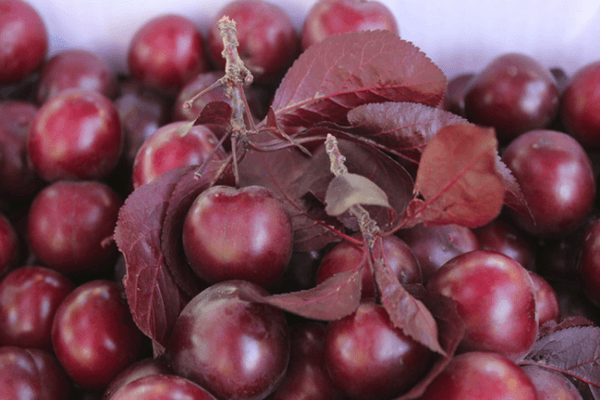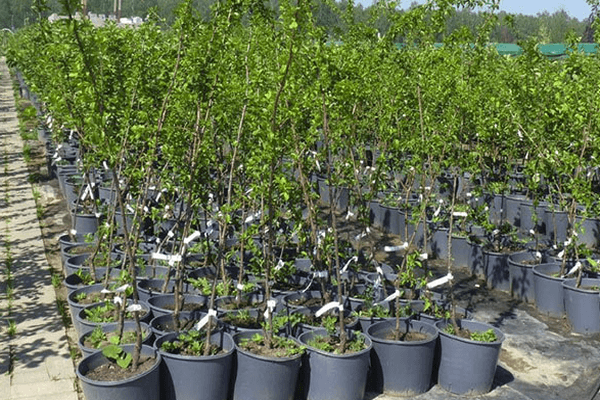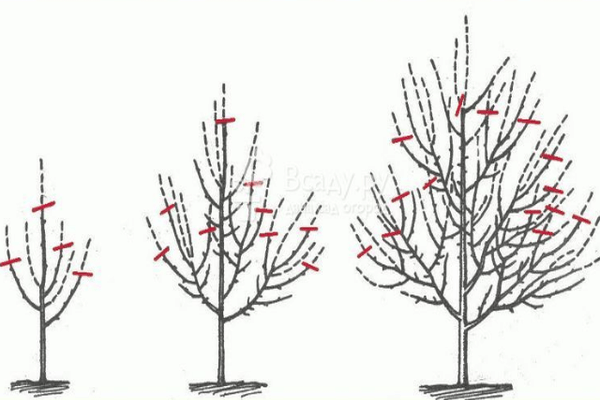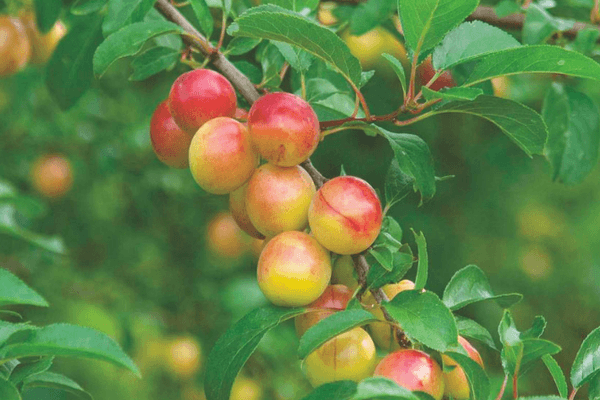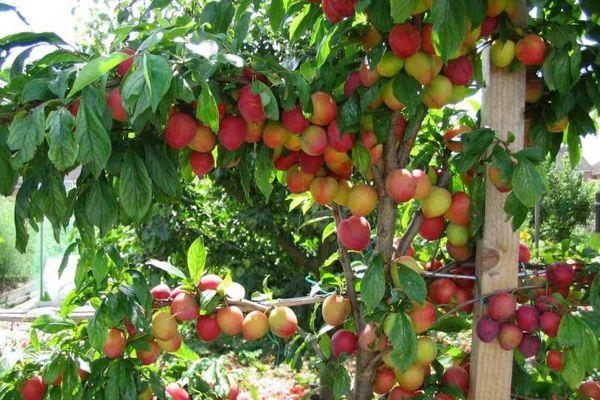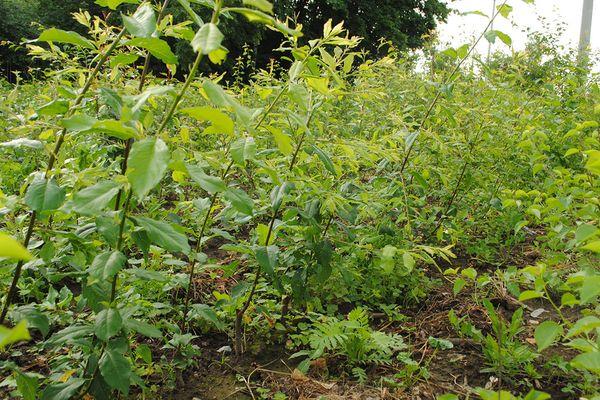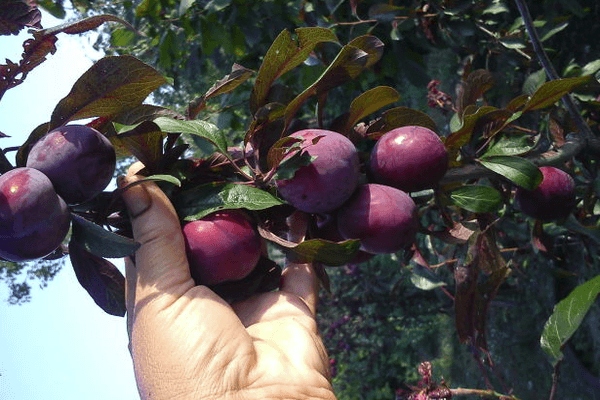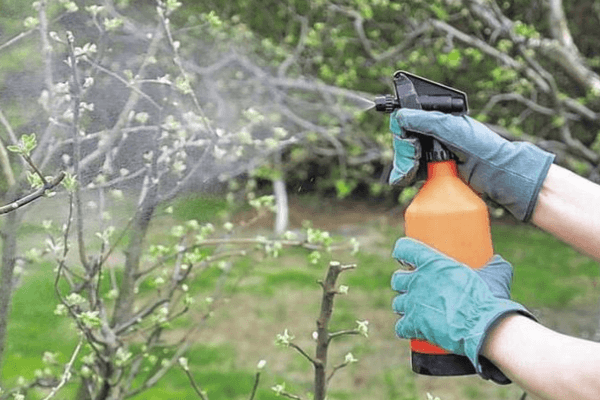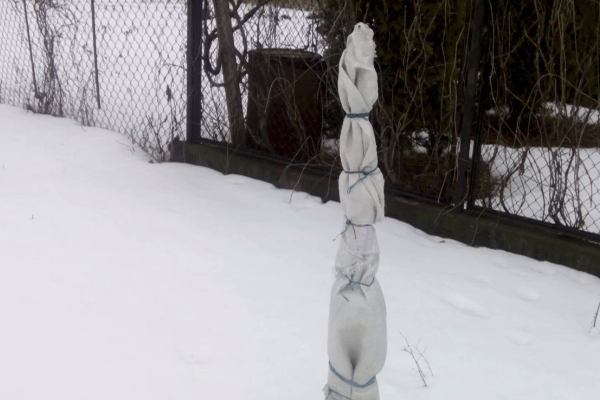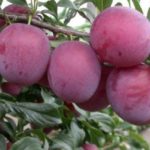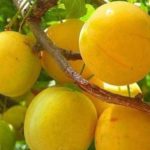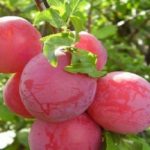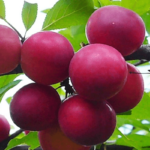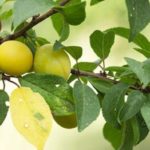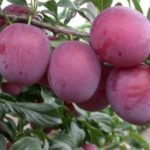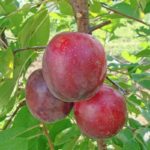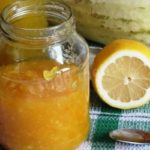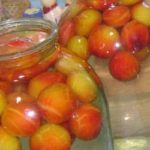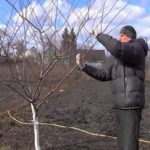Among the unpretentious garden crops, one can highlight cherry plum, the cultivation and care of which is not difficult even for beginning gardeners. It is characteristic that this type of fruit tree is the progenitor of the garden plum. You can select varieties of cherry plum, the fruits of which will be suitable for preparing preparations for the winter, sauces, and fresh consumption.
- In which regions is it recommended to plant a tree?
- Cherry plum varieties
- For the Moscow region and central Russia
- For Siberia and the Urals
- For the Altai Territory
- For southern regions
- How to plant cherry plum
- Optimal time for planting in open ground
- Autumn
- Spring
- What kind of soil does cherry plum like?
- Tree planting scheme and technology
- Tree care
- Irrigation
- Tree trunk care
- Feeding cherry plum
- Fertilizer during fruit set
- How to feed cherry plum after fruiting
- Terms and rules for crown formation
- Treatment against insects and pests
- Shelter for the winter
- What year does cherry plum bear fruit?
In which regions is it recommended to plant a tree?
Although cherry plum is a wild variety of plum, this plant prefers a warm climate. Therefore, before planting cherry plum, it is necessary to determine whether the variety is suitable for cultivation in the region. Hybrids are now available that bear fruit abundantly in the northern regions. The representative of the stone fruit culture withstands harsh winters, but with even air temperatures.
Sudden changes for a tree are fraught with diseases. After a winter with fluctuations from minus 25 to 45 degrees, it is difficult for cherry plum to recover. Return spring frosts are also dangerous for the tree. After all, plum trees begin to bloom earlier than other fruit trees. Low temperatures destroy flowers and ovaries. The cherry plum may stop bearing fruit until it returns to normal.
Any region is suitable for cultivating cherry plum, but it is necessary to properly care for the crop and prepare it for wintering.
Cherry plum varieties
Among the varieties of stone fruit crops we can distinguish:
- early ripening - Scythian gold, Found;
- mid-season - Kuban Comet, Cleopatra;
- late ripening - Golden Autumn, Hungarian.
Hybrids differ in size and taste of fruit. The fruit can be yellow, dark red, purple in color.
For regions beyond the Urals, winter-hardy varieties of early and medium ripening are chosen. Late-ripening hybrids are suitable for the south.
For the Moscow region and central Russia
In the Moscow region and nearby areas, frosts in winter reach 20-25 degrees. But due to high humidity, the cherry plum may freeze.It is better to choose trees of varieties that can survive and begin flowering by spring and fruiting by mid-summer.
Suitable for growing in the middle zone:
- Early-fruiting Tent with large dark purple berries that have sweet and sour pulp. Begins to bear fruit in the 4th-5th year of life.
- In early July, fruits appear on the Mara variety. Juicy, sweetish flesh is hidden under the yellowish skin.
- The Lama hybrid not only produces high yields of cherry plum, but can also become a decoration for a plot. Reddish leaves blend harmoniously with ripe fruit. The tree is afraid of strong winds.
- The Apricot variety ripens in August. Over the summer, the fruits become sweeter and taste like apricots. Productivity decreases in cold winters.
- The Scythian cherry plum Zlato grows up to 3 meters tall. 4-year-old trees produce golden fruits with a delicate and sweet taste.
- The Vladimir comet has large fruits with orange flesh. With good care, the tree produces high yields of fruit.
Cherry plum hybrids are rarely self-fertile, so trees of such varieties as Cleopatra and Scythian Gold are planted nearby.
For Siberia and the Urals
Viable hybrids bred by breeders have found their place in the Ural and Siberian gardens. It is better to grow winter-hardy trees here:
- Cleopatra, self-fertile, with purple berries;
- Nesmeyana early ripening;
- high-yielding Traveler;
- Mara, disease resistant.
Low-growing trees bear fruit abundantly and survive the winter with good shelter. Yields depend on proper care.
For the Altai Territory
In this region, cherry plum planting is carried out everywhere. Many hybrids grow in gardens and tolerate both severe frosts and dry summers. At the Scarlet Dawn, plums ripen in mid-July.They are bright red, weighing 18 grams, freshly sweet.
On the widely spreading bushes of Mars, burgundy-colored fruits will ripen in early August. The Almond variety retains its harvest for 10 days. Large orange fruits reach a weight of 30 grams. Cherry plum Rubin is beautiful with its red leaves, pink flowers, dark fruits with cherry pulp.
Successful cultivation of a crop requires planting 2-3 trees of different varieties.
For southern regions
In areas with a warm climate, any hybrid crop is suitable for cultivation. It is better to choose Dessert and Tsar's plums with sweet plums. After grafting, they get cherry plum, which has a similar taste to apricots and peaches. The large-fruited Kuban Comet crop is often chosen.
In the south, trees are not afraid of frost, but with deep snow cover and zero temperatures, the lower part of the trunk damps out.
How to plant cherry plum
In the fruiting and growing season of a crop, everything is important: the timing of planting and the choice of location. Activities are managed taking into account the region, its climatic and weather conditions.
Optimal time for planting in open ground
The period for planting cherry plums is determined by which variety is chosen. If a seedling is purchased with a closed root system, then it is better to plant it in the spring. Even summer is suitable for planting cherry plum plantations. Autumn planting is better for the southern regions, where winter begins later than expected.
Autumn
Young trees begin to be planted in open ground in August-September. Late-ripening varieties - until mid-October. The seedling needs to adapt and take root before the cold weather sets in. In a month, they prepare a plot for cherry plums and planting holes.If you did not have time to plant, it is better to leave the seedlings until spring, burying them in the garden.
Spring
Spring is generally the best time to plant cherry plums, before the buds swell. In the fall, tree holes are prepared. The holes are filled with organic fertilizer (1-2 buckets), superphosphate (200-300 grams), and potash fertilizers (100-150 grams). On soils with high acidity, add 50 grams of fluff lime. Be sure to mix the components with soil before filling the hole. If the soils are heavy, then they are diluted with sand (a bucket per hole).
What kind of soil does cherry plum like?
Areas with:
- good lighting, without exposure to cold winds:
- neutral acidity;
- deep groundwater;
- high permeability to moisture and nutrition.
It is preferable to plant cherry plum where there will be less snow in winter. If the dacha is located on hills and ridges, then choosing a plot for cultivation is easy. In the lowlands, the tree will damp out or freeze out.
Tree planting scheme and technology
Prepare planting holes 50-60 centimeters deep. Their diameter is the same, but on infertile, sandy soils it is necessary to increase the width to 1 meter. The distance between trees is determined to be 2.5-3 meters.
After digging, organic and mineral fertilizers are added to the soil. A mound of humus is made in the middle of the pit, a tree is placed on it, and a peg next to it. Fill the hole, supporting the seedling with one hand. During the procedure, shake the seedling periodically so that the clods of earth are distributed between the roots. It is necessary to monitor the position of the root collar. It should be at ground level or 2-3 centimeters higher.
At the end of planting, tie the seedling to a peg, water the plant, using up to 20-30 liters of water. If the planting scheme is followed, the cherry plum will quickly take root.
Tree care
Proper cultivation of cherry plum requires knowledge of agricultural technology. The vegetation of the crop should not be left to chance. It is necessary to water, fertilize, and loosen the root circle on time.
Irrigation
In the first year of a tree’s life, it needs abundant watering. From the 2nd year, the frequency of moisturizing is reduced. If there is a lot of moisture and nitrogen in the soil, then the cherry plum begins to grow rapidly and the risk of infection by aphids increases. At the same time, the shoots ripen poorly and are prone to damping off. During the summer, it is enough to water the trees 2-3 times. In August they finish moistening the soil. It is not advisable to water cherry plums in the winter.
Tree trunk care
In arid areas, it is necessary to keep the tree trunk under mulch at all times. And where there is a lot of moisture, it is enough to mulch for a year or two. It is better to pour a layer of humus and peat 8-10 centimeters around the tree.
When changing mulching, embed the previous layer into the soil with a shovel to a depth of 5-6 centimeters so as not to damage the roots located close to the surface.
They constantly loosen the soil under garden trees and weed up to 4-5 times per season.
Feeding cherry plum
If the tree is planted correctly, you don’t need to feed it for the first 2-3 years. When the cherry plum plantation begins to bear fruit, they begin to apply 2-3 kilograms of manure per square meter, 30-50 grams of phosphate fertilizers, 12-15 grams of potassium fertilizers, and ammonium nitrate. They are brought in for autumn digging or loosening.
You can make grooves along the rows of plants at a distance of 1.5 meters from the trees. Bird droppings, manure are poured into them or watered with liquid solutions of nutrients.
Fertilizer during fruit set
When the flowering of the cherry plum ends, fertilizers from nitrogen-potassium fertilizers are applied. They consist of 10 grams of ammonium nitrate, 5 grams of potassium salt per bucket of water. You can use mullein diluted in a ratio of 1:5, or bird droppings - 1:12. They also use the preparation of a manure solution with a concentration of 1:3. It must be kept in a barrel for up to 3-5 days. And then bring it to the desired concentration and water the tree trunk circle or grooves. A bucket of liquid is used for 2-3 linear meters of the groove. When applying fertilizers, the fruit ovary will form faster.
To speed up the ripening of fruits, cherry plums are fertilized in July with phosphorus-potassium complexes.
How to feed cherry plum after fruiting
In the period after harvesting, it is necessary to water with a nutrient solution of superphosphate (15-20 grams) and potassium salt (7-10 grams). It is necessary to fertilize if the tree has not yet finished growing. Replace mineral mixtures with wood ash. 50 grams is enough for a bucket of water.
Every 4 years, marginal soils need fertilizer. Around the cherry plum tree, at a distance of 2 meters, holes are dug 30 centimeters deep. Take part of the ash and 3 parts of humus, mix and fill the holes.
Terms and rules for crown formation
Not only fertilizing plays a role in the formation of fruits, but also pruning the tree. It is necessary to correctly form the cherry plum crown:
- For the first 2 years, you need to remove all branches, leaving the trunk clean 40-60 centimeters from the ground. The number of skeletal branches will be within 3-4.
- The shoots that form near the trunk are pruned annually.
- The tops of the shoots of young seedlings are pinched in the summer.
- In the 3-4th year, you need to cut out the central conductor located above the 3rd skeletal knot.This is how a bowl-shaped crown is formed.
- In the spring, the crown is thinned, removing dried branches and those located closer than 20 centimeters to each other.
Pruning is necessary in order to rejuvenate and improve the health of the tree.
Treatment against insects and pests
Among plum diseases, fungal infections are most often noted: brown spot and hole spot. Here pathology is determined by spots on the leaves and holes on their surface. In addition, gum secretions and cracks are visible on the cherry plum trunks. Disease prevention is the collection and burning of plant residues. Spraying with Bordeaux mixture three times a season will also help.
The fruit mite and its larvae slow down the ripening of the crop. It is necessary to promptly clear the tree trunks of old bark and treat the crown with insecticides.
Caterpillars of the yellow sawfly eat away the entire pulp and stone of the fruit. In cloudy weather, adult insects are collected or shaken off onto film. Among the drugs that are effective are Fufanon and Novaktion. They begin to be used before flowering.
Codling moth caterpillars are combated by treating with a solution of table salt, taking 500 grams per 10 liters of water. An adult tree spends 7 liters of liquid, a young tree - 2 liters.
To get rid of fruit sapwood, you need to trim and burn the damaged branches. It is better to combat aphids during the period when the buds are exposed with insecticides such as “Fufanon”.
Shelter for the winter
To properly care for cherry plums in central Russia and in the gardens of the Trans-Ural region, you need to think about covering the seedlings before wintering. This includes whitewashing plum trunks, which will prevent sunburn in February and March.
It is not recommended to water the cherry plum abundantly before winter, as this will cause the trunk to begin to rot under the snow. When the thickness of the snow cover is more than a meter, it is necessary to trample it down.It is dangerous when precipitation falls on the thawed ground.
It is recommended to put a casing made of tin or sheet iron with a diameter of 40 centimeters on the cherry plum trunk. The end of the casing is buried 10 centimeters into the ground. It is important that there are no branches under the shelter. The top is wrapped with mesh or burlap. Such a dry winter will save you from rodents, freezing, and heating.
What year does cherry plum bear fruit?
Many varieties of stone fruit begin to bear fruit in the 4-5th year of life. For the first time, single specimens appear on the branches ahead of schedule if the cherry plum care is correct. Annual and regular fruiting depends on climate and weather. The more sun, the sweeter the berries on the tree.
The berries are collected together with the stalk and placed in baskets. The harvest is stored for 5 to 10 days. Cherry plums are used to prepare sauces, compotes, and jams.

